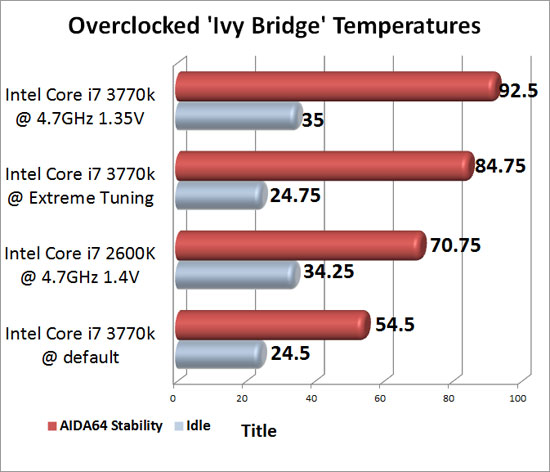dividebyzero
Posts: 4,840 +1,271
Thanks Steve. I keep this up I'm giving myself a promotion...the days of trainee n00b will be behind me- long live Complete n00b !!!
Prior to the official launch I was reading the review that awardfabrik put up. They compared sixteen IB's:

For overclockability, voltage, temp etc. (using some very reasonable kit):

And found what most people expected: Namely, that the variance in a launch CPU step/revision is all over the place -since backed up by the mainstream reviews. Amazing how short some people's memories are- I have distinct recollections of exactly the same lack of standardization for Sandy Bridge, Bloomfield and Bulldozer.
For sure IB runs hotter once you start getting above 1.25-1.3v, but from what I understand that is a product of transistor density (so people should get used to it unless they plan on being on 45/32nm forever). Intel have obviously taken some of this into account since IB's Tjuncture max (throttling) is now 105C -up from Sandy's 98C.
Interested to know what Intel's "safe 24/7" core temp is, although with thermal throttling being so pervasive it probably makes it largely a moot point
Prior to the official launch I was reading the review that awardfabrik put up. They compared sixteen IB's:

For overclockability, voltage, temp etc. (using some very reasonable kit):

And found what most people expected: Namely, that the variance in a launch CPU step/revision is all over the place -since backed up by the mainstream reviews. Amazing how short some people's memories are- I have distinct recollections of exactly the same lack of standardization for Sandy Bridge, Bloomfield and Bulldozer.
For sure IB runs hotter once you start getting above 1.25-1.3v, but from what I understand that is a product of transistor density (so people should get used to it unless they plan on being on 45/32nm forever). Intel have obviously taken some of this into account since IB's Tjuncture max (throttling) is now 105C -up from Sandy's 98C.
Interested to know what Intel's "safe 24/7" core temp is, although with thermal throttling being so pervasive it probably makes it largely a moot point
